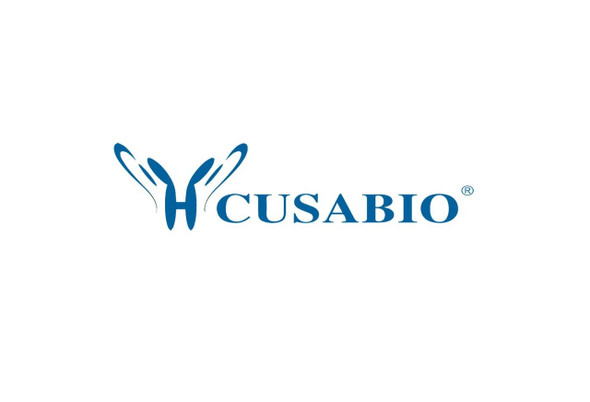Cusabio Human Recombinants
Recombinant Human Alpha-protein kinase 1 (ALPK1), partial | CSB-BP836286HU
- SKU:
- CSB-BP836286HU
- Availability:
- 3 - 7 Working Days
Description
Recombinant Human Alpha-protein kinase 1 (ALPK1), partial | CSB-BP836286HU | Cusabio
Alternative Name(s): Chromosome 4 kinase Lymphocyte alpha-protein kinase
Gene Names: ALPK1
Research Areas: Signal Transduction
Organism: Homo sapiens (Human)
AA Sequence: KYSKKSELWTAQETIVYLGDYLTVKKKGRQRNAFWVHHLHQEEILGRYVGKDYKEQKGLWHHFTDVERQMTAQHYVTEFNKRLYEQNIPTQIFYIPSTILLILEDKTIKGCISVEPYILGEFVKLSNNTKVVKTEYKATEYGLAYGHFSYEFSNHRDVVVDLQGWVTGNGKGLIYLTDPQIHSVDQKVFTTNFGKRGIFYFFNNQHVECNEICHRLSLTRP
Source: Baculovirus
Tag Info: N-terminal 10xHis-tagged and C-terminal Myc-tagged
Expression Region: 1017-1237aa
Sequence Info: Partial
MW: 29.9 kDa
Purity: Greater than 85% as determined by SDS-PAGE.
Relevance: Serine/threonine-protein kinase that detects bacterial pathogen-associated molecular pattern metabolites (PAMPs) and initiates an innate immune response, a critical step for pathogen elimination and engagement of adaptive immunity (PubMed:28877472, PubMed:28222186, PubMed:30111836). Specifically recognizes and binds ADP-D-glycero-beta-D-manno-heptose (ADP-Heptose), a potent PAMP present in all Gram-negative and some Gram-positive bacteria (PubMed:30111836). ADP-Heptose-binding stimulates its kinase activity to phosphorylate and activate TIFA, triggering proinflammatory NF-kappa-B signaling (PubMed:30111836). May be involved in monosodium urate monohydrate (MSU)-induced inflammation by mediating phosphorylation of unconventional myosin MYO9A (PubMed:27169898). May also play a role in apical protein transport by mediating phosphorylation of unconventional myosin MYO1A (PubMed:15883161).
Reference: "ALPK1 phosphorylates myosin IIA modulating TNF-alpha trafficking in gout flares." Lee C.P., Chiang S.L., Ko A.M., Liu Y.F., Ma C., Lu C.Y., Huang C.M., Chang J.G., Kuo T.M., Chen C.L., Tsai E.M., Ko Y.C. Sci. Rep. 6:25740-25740(2016)
Storage: The shelf life is related to many factors, storage state, buffer ingredients, storage temperature and the stability of the protein itself. Generally, the shelf life of liquid form is 6 months at -20?/-80?. The shelf life of lyophilized form is 12 months at -20?/-80?.
Notes: Repeated freezing and thawing is not recommended. Store working aliquots at 4? for up to one week.
Function:
Involvement in disease:
Subcellular Location:
Protein Families:
Tissue Specificity:
Paythway:
Form: Liquid or Lyophilized powder
Buffer: If the delivery form is liquid, the default storage buffer is Tris/PBS-based buffer, 5%-50% glycerol. If the delivery form is lyophilized powder, the buffer before lyophilization is Tris/PBS-based buffer, 6% Trehalose, pH 8.0.
Reconstitution: We recommend that this vial be briefly centrifuged prior to opening to bring the contents to the bottom. Please reconstitute protein in deionized sterile water to a concentration of 0.1-1.0 mg/mL.We recommend to add 5-50% of glycerol (final concentration) and aliquot for long-term storage at -20?/-80?. Our default final concentration of glycerol is 50%. Customers could use it as reference.
Uniprot ID: Q96QP1
HGNC Database Link: N/A
UniGene Database Link: N/A
KEGG Database Link: N/A
STRING Database Link: N/A
OMIM Database Link: N/A









